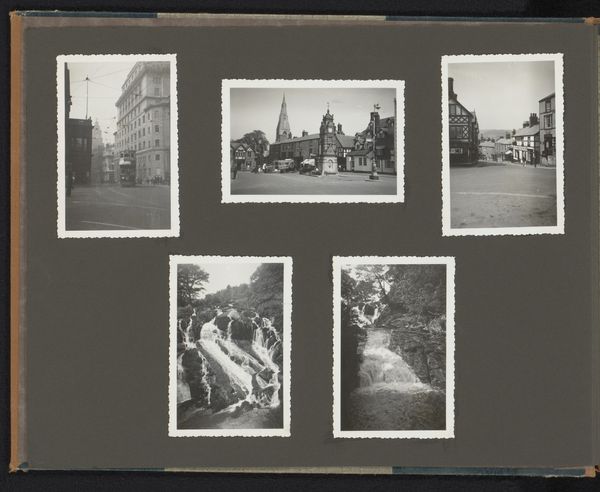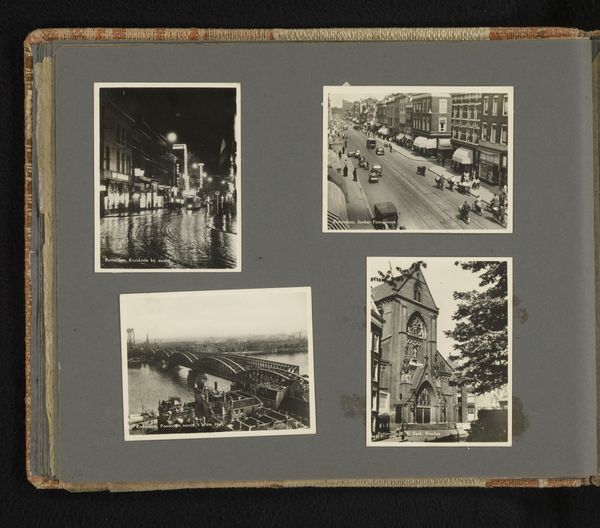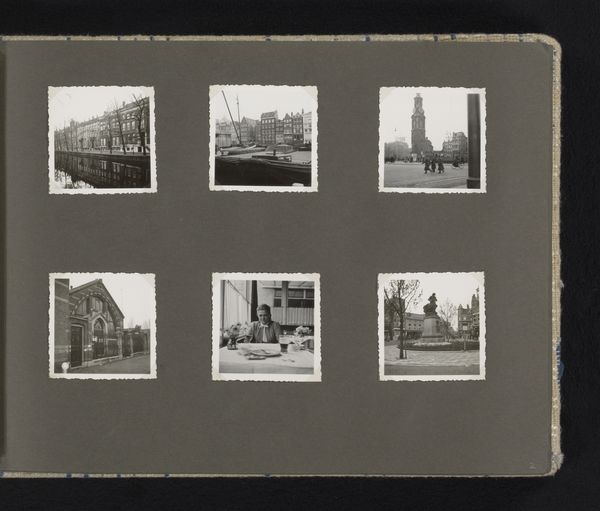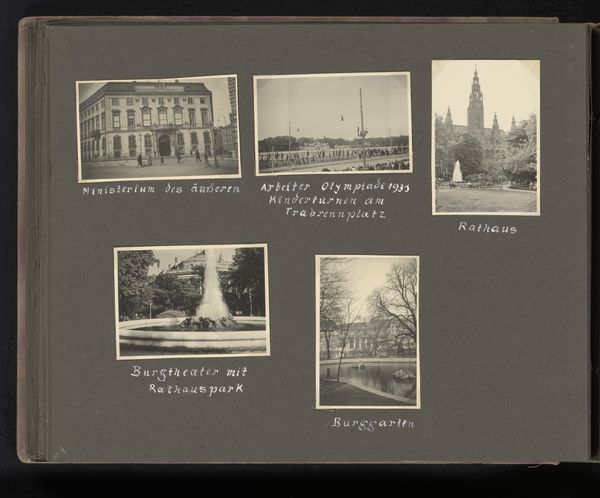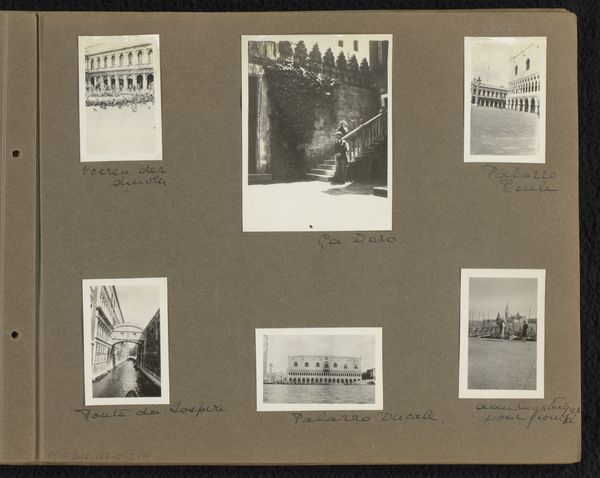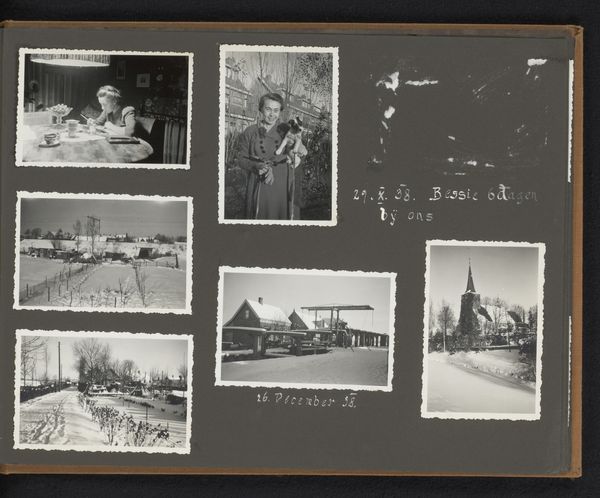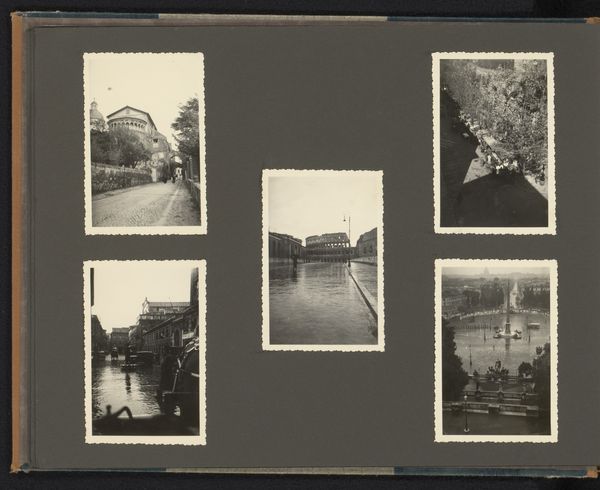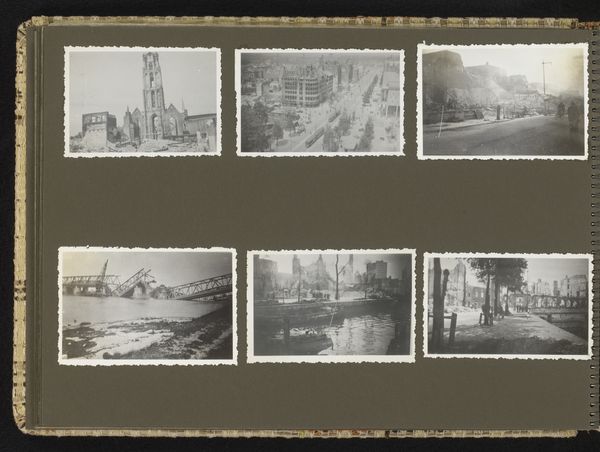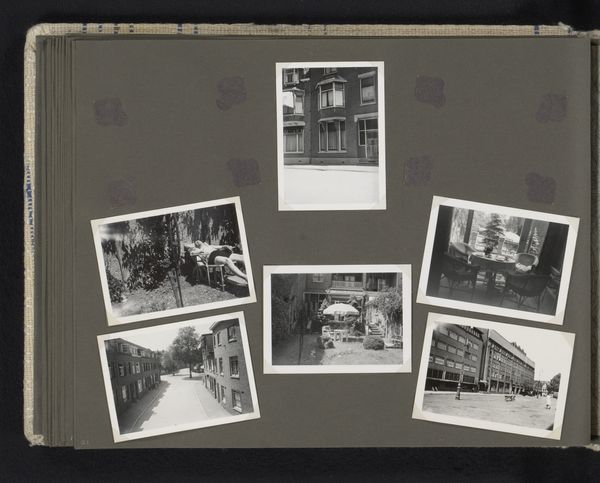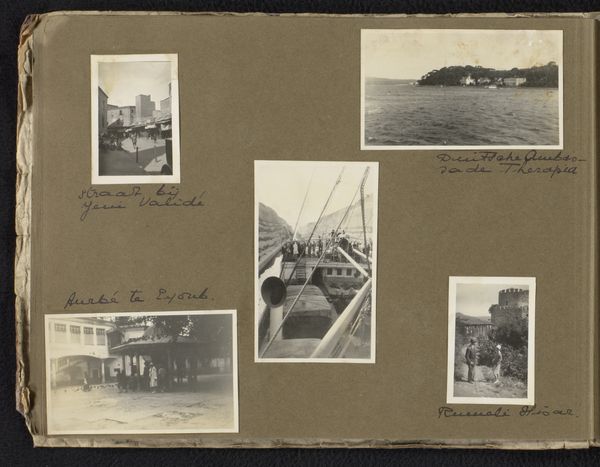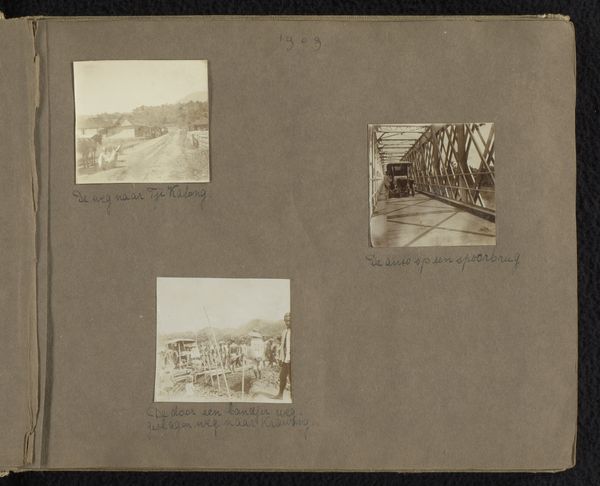
print, photography
# print
#
street-photography
#
photography
#
cityscape
#
modernism
Dimensions: height 60 mm, width 90 mm, height 207 mm, width 260 mm
Copyright: Rijks Museum: Open Domain
Curator: What we have here is an album page, featuring photographic prints collectively titled "Lübeck", and they appear to date from somewhere between 1935 and 1938. Editor: Immediately, I'm struck by the tonality—the stark contrast, the shades of gray lending a somber feel to the collection of cityscapes and architectural details. It’s an interesting juxtaposition, really. Curator: Indeed. The imagery presented reflects the rising nationalist sentiments in Germany during that period; such cityscapes provided the stage for public spectacles, parades, and the re-establishment of supposed traditional order and beauty. Editor: Look at the composition. The architectonic shapes, from Gothic arches to bridge structures and broad perspectives of the buildings. These visual patterns speak to a sense of controlled vision. Curator: Consider also how photographic collections, displayed privately or publicly, helped define national identity. These images showcase a meticulously constructed view of Lübeck—clean, organized, grand. The placement of these photographs in what seems like a private collection could demonstrate this family or person's investment in Nazi concepts. Editor: I notice the careful arrangements and symmetry; a recurring motif is the use of water as a mirroring element in several compositions, that gives rhythm to this urban environment, and balance to its heavy structures. But if we see water, a substance often tied to flexibility, doesn't that pose a question of contradiction within a broader, orderly picture? Curator: Interesting. It hints that the controlled image can not hide some complexities of life, and those glimpses can question the idea of the new order and beauty in these photographs. Editor: I think so too. These sharp contrasts do more than present physical structures. It tells stories of tension, strength and constraint; visual languages interact in order to reflect the complex spirit of the depicted era. Curator: The photographic documentation and archiving such scenes became important as propaganda efforts rose, the collection itself acting almost as an exhibit space. Editor: I would agree. The modernist approach highlights the intrinsic form to evoke ideas bigger than pure representational accuracy; what you pointed out before connects these intimate views to social and political messages. Curator: A deeper look definitely gives pause beyond what may appear initially like typical landscape images, in thinking about the context for artistic work in times of social disruption and state power. Editor: Exactly—revealing stories embedded in simple photographs makes analyzing the images more meaningful; beyond light, shapes, and patterns.
Comments
No comments
Be the first to comment and join the conversation on the ultimate creative platform.
